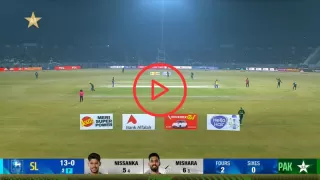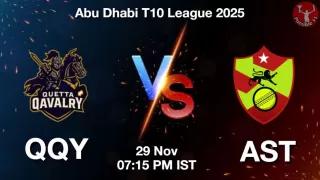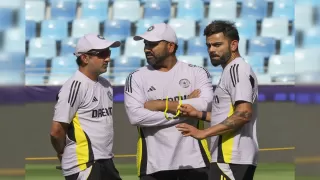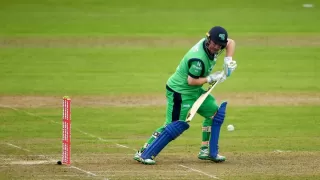Types of signals by umpires in cricket

Cricket, often dubbed the "gentleman's game," is a sport steeped in tradition, tactics, and technicalities. One integral aspect of cricket is the communication between the umpires and players. Umpires use a comprehensive system of signals to convey crucial information and decisions during a match. In this blog, we unravel the world of cricket umpire signals, exploring the diverse gestures used to communicate various situations and rulings on the field. From boundary signals to dismissals and penalty declarations, join us as we decipher the language of cricket umpiring signals.
Types of Signals in Cricket

Out
The umpire signals out by raising their index finger above their head. This signal is used to indicate that the batsman is out.
Not Out
The umpire signals not out by shaking their head. This signal is used to indicate that the batsman is not out.
Wide
The umpire signals wide by extending their arms horizontally. This signal is used to indicate that the delivery was too wide to be played.
No Ball
The umpire signals no ball by raising their arm above their head and then pointing to the ground. This signal is used to indicate that the delivery was illegal.
Leg Byes
The umpire signals leg byes by touching their raised knee with their hand. This signal is used to indicate that the ball passed the batsman's leg without touching his bat and then went to the boundary.
Byes
The umpire signals byes by sweeping their right hand across their body three or four times. This signal is used to indicate that the ball passed the batsman's bat and went to the boundary.
Time Out
The umpire signals time out by raising their fist above their head. This signal is used to indicate that the fielding team has used their time out.
Soft Signal
The umpire signals soft signal by raising their index finger above their head for out or shaking their head for not out. This signal is used to indicate the initial decision of the umpire before referring the decision to the third umpire.
New Ball
The umpire signals new ball by raising both their arms above their head. This signal is used to indicate that a new ball is being used.
Other Signals
In addition to the signals listed above, umpires also use a variety of other signals to communicate with players and spectators. These signals can be used to indicate the status of the game, such as whether the innings is over or whether a batsman is injured. They can also be used to communicate with the fielding team, such as when to change bowlers or when to take a timeout.
The Importance of Signals
The use of signals is essential for the smooth running of a cricket match. Signals allow umpires to communicate with players and spectators in a clear and concise way. This helps to ensure that the game is played fairly and that everyone knows what is happening.
Additional Information
In addition to the signals listed above, there are a few other signals that umpires may use in certain situations. These signals include:
- Review: The umpire signals review by raising their index finger above their head and then pointing to the ground. This signal is used to indicate that the fielding team is requesting a review of a decision.
- Third Umpire: The umpire signals third umpire by raising their index finger above their head and then pointing to the sky. This signal is used to indicate that the decision has been referred to the third umpire.
- Time Up: The umpire signals time up by raising their fist above their head and then pointing to their watch. This signal is used to indicate that the game is over.
Conclusion
The use of signals is an important part of cricket. Umpires use signals to communicate with players and spectators, and these signals help to ensure that the game is played fairly. If you are watching a cricket match, be sure to pay attention to the umpires' signals. They will help you to understand what is happening and to enjoy the game even more.











Give Your Feedback